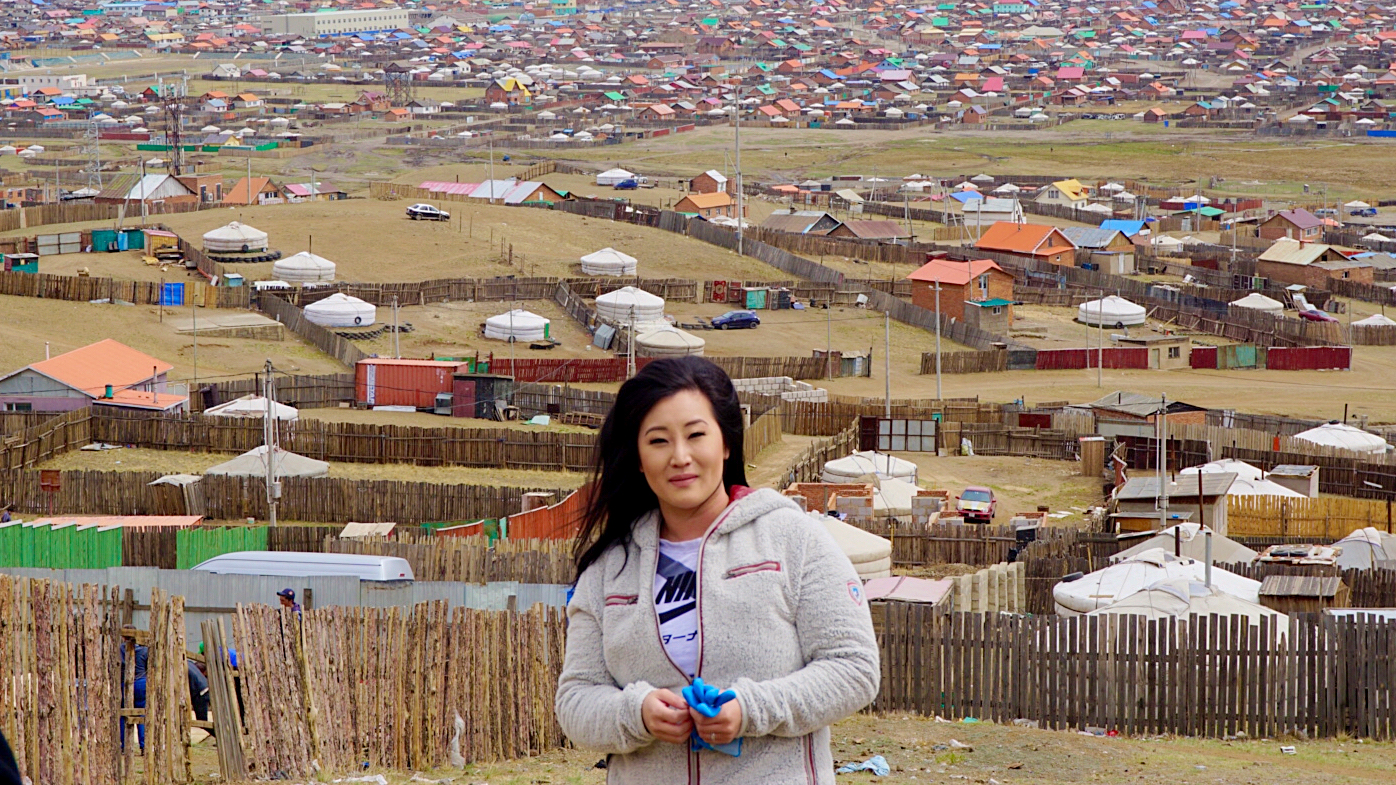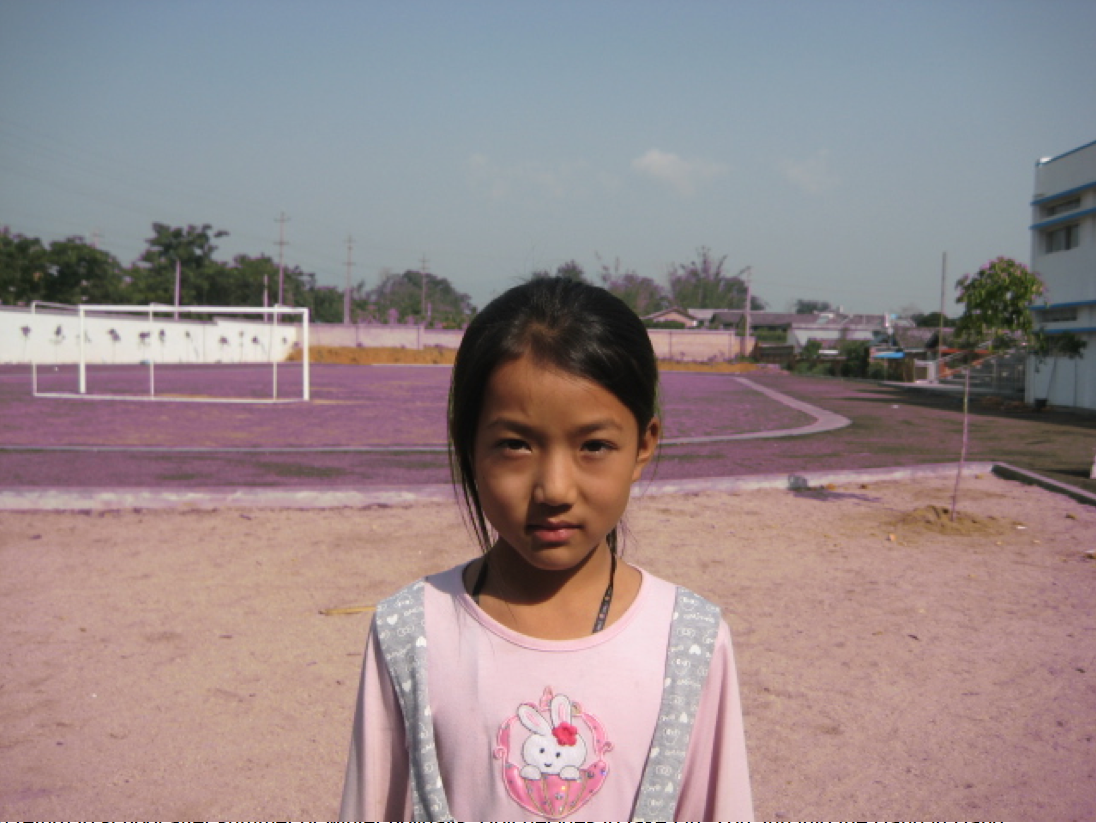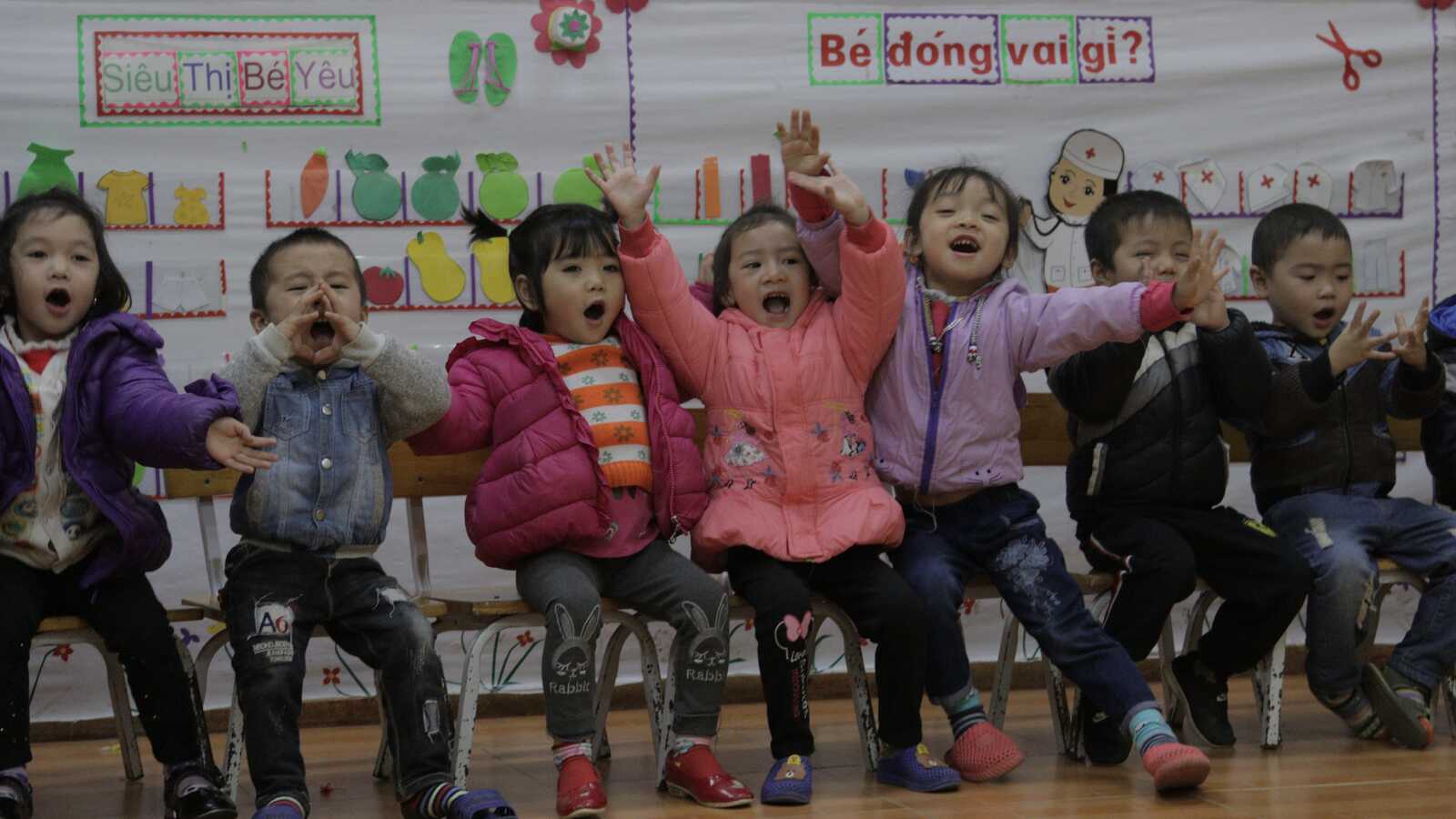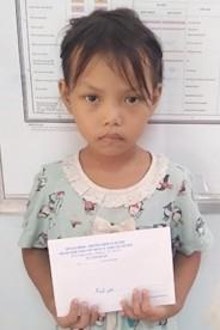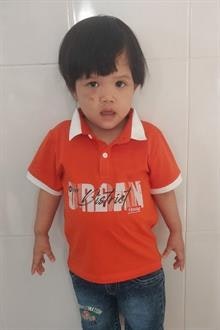When Tieu endures a horrific accident at work and loses her source of income, she fears her daughters will be forced to drop out of school because she can’t afford their fees. But when she receives an unexpected gift, in an unusual size and shape, she begins to feel hopeful again.
Tieu lightly rests her left hand on her right arm. Her skin is painful to look at. Marbled and pocked, shiny and red and raised about an inch above her healthy skin, a severe burn runs the length of her arm, serving as a daily reminder of the gasoline fire that nearly took her life. Tieu is 40 but looks much younger, with shiny black hair parted down the side. She has five daughters — the youngest of which sits beside her now, giggling and bouncing with excitement to have visitors in her home. Another of Tieu’s daughters sits on the other side of her giggly sister, watching her mom with worry as she talks about her burn.
“This daughter,” Tieu says, looking solemnly at her older daughter, “wants to become a doctor so she can treat my hand.”
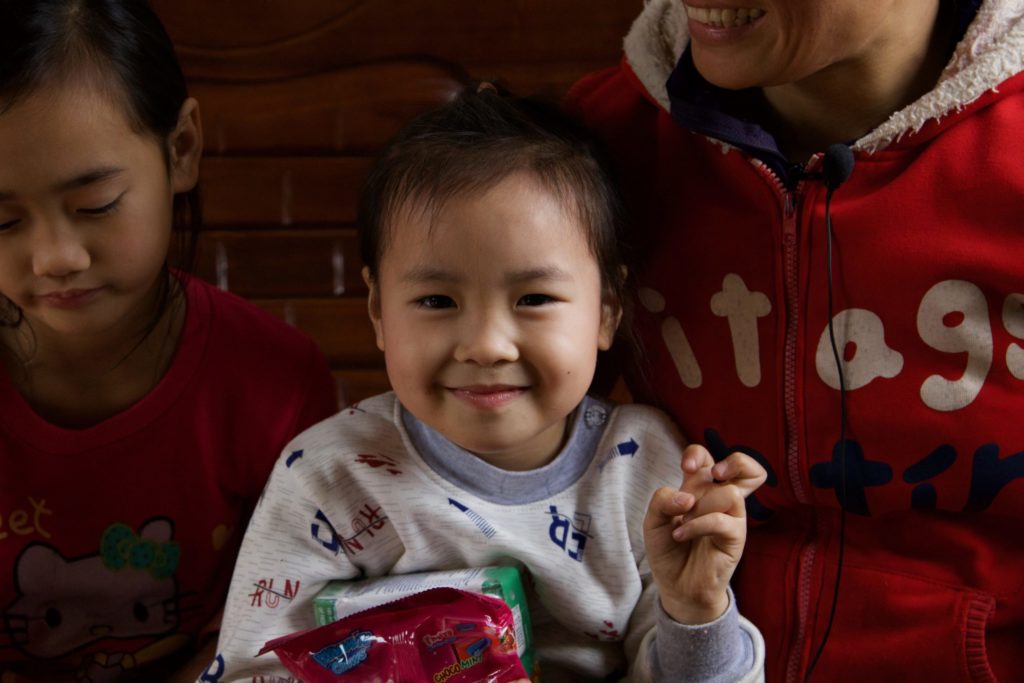
Up until the accident a year and a half ago, Tieu had a fairly well-paying job working in a factory that produced wooden furniture. She and her husband both worked, and together, they earned just enough to provide for their five girls — including paying the $75 to $200 per child to cover their school fees, supplies, books and uniforms. But in June 2016, when gasoline spilled and caught fire in the factory where she worked, Tieu barely escaped. She sustained severe burns over 40 percent of her body, all along her back and legs and right arm, causing her to lose partial mobility in her right hand. If she presses too hard on her skin, it hurts. If she moves her arm, it hurts. If she tries to extend her arm, she can’t.
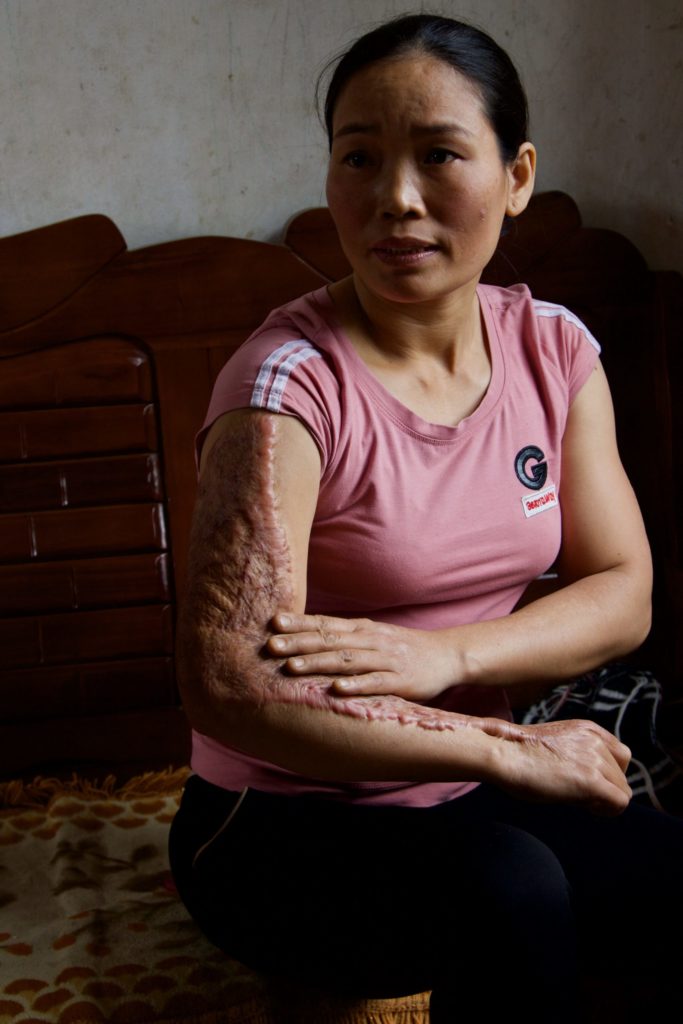
Although she received $500 in compensation from her employer, her hospital bills added up to about $3,000. To pay the hospital, she and her husband had to borrow money from friends and family. In debt, and unable to work, Tieu worried not so much about herself, but about what this would mean for her daughters. She wanted more for them than a life of hard manual labor. She wanted them to have freedom from worry, and security when accidents inevitably happen.
“I worry most that my children won’t be able to go to school,” Tieu says. “Because of my burn and injury, what my husband earns is barely enough for us to survive.”
Like so many families in rural Vietnam, who have few job opportunities beyond working in factories or cultivating the small plot of land allotted to them by the government, Tieu and her husband have always just gotten by.
Their safety net is their family — and their community.
Holt’s vice president of South and Southeast Asia programs, Thoa Bui, grew up in Vietnam, and her father came from a community not far from where Tieu and her family live outside Hanoi.
“One thing that is really nice about rural living in Vietnam is, for example, if your house is really collapsing, and the government gives you some [support], and NGO gives you some, and you put some in, the neighbors will come and do labor and help put up the bricks and all these things,” she says. “They try to help.”
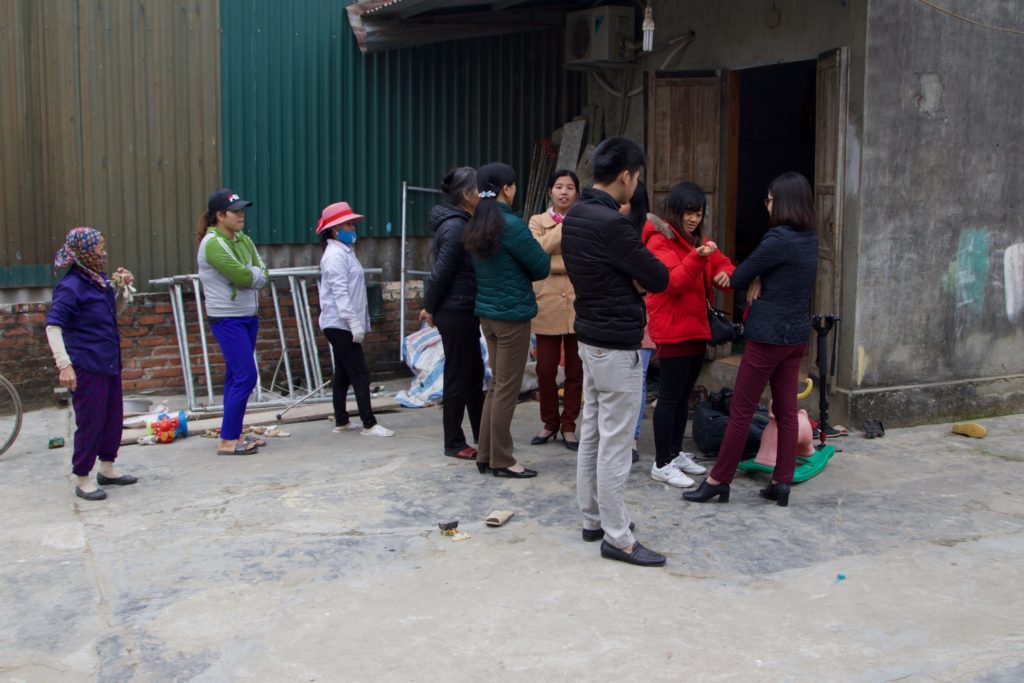
In many ways, the communal structure provides a support network that has more or less disintegrated in the city. Relatives often live close by and rely on each other for support. Children care for aging parents, and grandparents care for grandchildren — providing free childcare while their parents work during the day. Everyone knows everyone in the community and, at the cost of privacy, neighbors often know each other’s personal struggles and offer to help when needed.
“If you live in the same village, whatever is happening in your family, the village just knows because that’s the way of life here,” explains Thoa. But they are also very supportive of each other, she says, “because of their level of understanding of what other families are going through.”
On the morning we visit Tieu and her family, several neighbors stand outside her house, curious about the American film crew inside. They follow as we walk along the labyrinthine brick-walled passageways that envelope the commune like a medieval fortress. In another section of the commune, techno music blares so loud that no one can possibly focus on anything but the wedding celebration taking place at 10 a.m. on this overcast Monday morning; everyone in the community is invited, so no one complains.
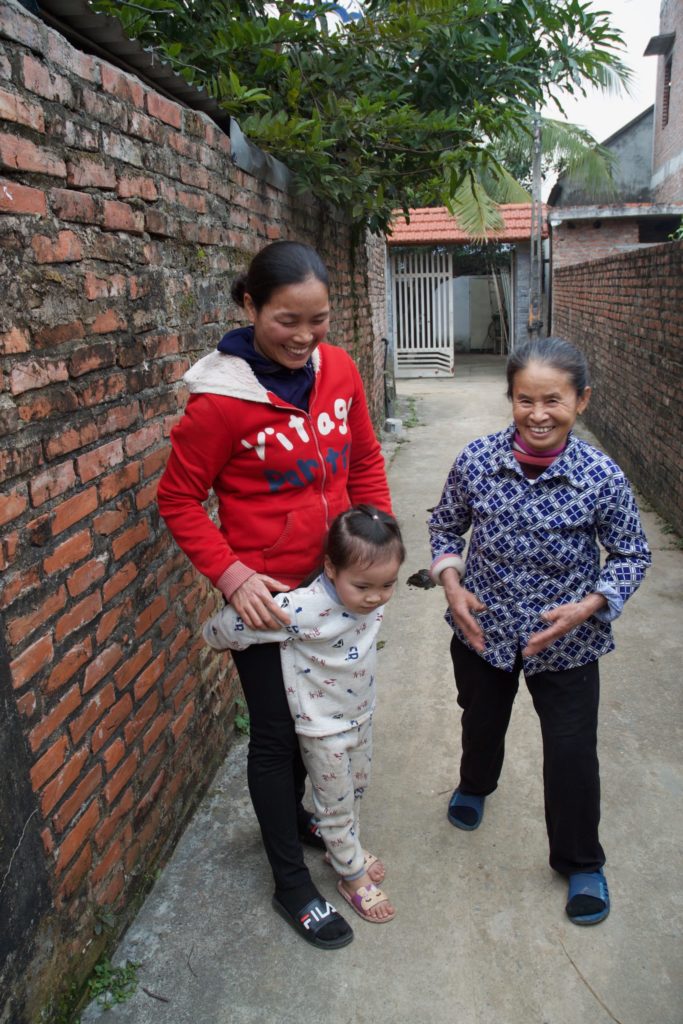
As we try to talk over the music, Holt Vietnam’s long-time in-country director, Hang Dam, laughs. “Vietnam is a communal society,” she says. “This is just how it is.”
Hang is in her 40s, tall with high, freckled cheeks and dark, red-tinted hair. Like Thoa, she is a former Fulbright scholar, is friendly but assertive, and perfectly maintains relations with the 3-to-5 government caseworkers who accompany us on every family visit. Hang grew up in northern Vietnam in the years after the Vietnam War, and vividly recalls layering shirts in winter because her family couldn’t afford warm coats. At school, she says, she and her friends would compare how many layers each of them had on. The economy suffered so much during the war that the government rationed food. In this time of scarcity, social expectation dictated that if you had rice or meat, and your neighbor didn’t, you had to share.
But even in a communal society like Vietnam, family relies mostly on family, and neighborly compassion — and generosity – can only stretch so far.
With Tieu’s debt and worry mounting, she approached the local women and children’s committee in her commune, which gave her a small grant of about $140 — an amount that would help cover the cost of fees for one of her daughters to go to school. The government provides some assistance for families in crisis, but rarely is it enough to sustain an entire family, much less send all of their children to school.
“Any sort of social benefit in Vietnam is really small,” Thoa says. “It helps a little bit, but not much.”
Tieu, however, didn’t need a handout. She still had full use of her legs and back and left arm. She could work, but for the first time in her adult life, she found herself unemployable in the type of factory jobs and seasonal labor she once did.
“Because of my hand, no one will hire me,” she says, demonstrating how little mobility she has in her right arm and hand.
As winter set in, Tieu’s family went deeper in debt when her husband suffered a workplace injury of his own — breaking his right hand. All of a sudden, they had no income, and no way to provide for their girls.
They were about to give up hope.
But around the same time, on the other side of the world, Holt’s Christmas Gifts of Hope catalog started hitting mailboxes. At Holt, we began receiving gifts from generous donors for the children and families in our programs. Gifts like warm bedding and nourishing food for children in orphanages, vaccines and emergency medical care for families living in under-resourced communities, and gifts that empower struggling families with the tools and resources they need to earn a stable income. One of these income-generating gifts weighs 1,500 pounds. It moves and moos and produces nourishing milk and offspring that can be sold for profit — a perfect gift for a family like Tieu’s.
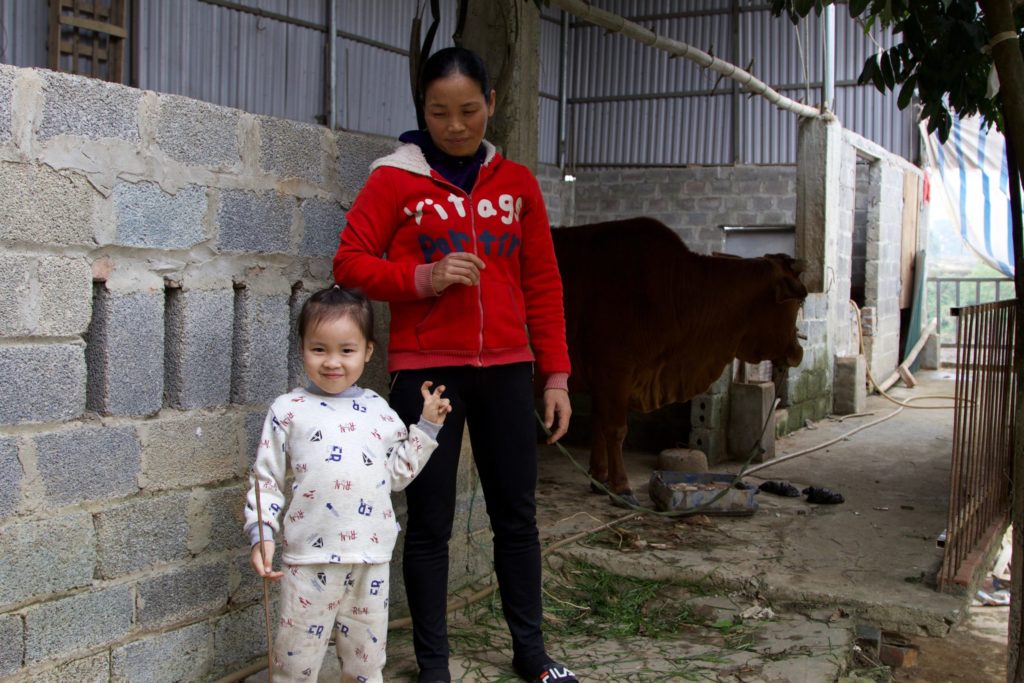
“A cow is a really big asset for poor people in rural Vietnam,” Thoa says. When the cow produces a calf, they can sell the calf, and then repeat the cycle — providing regular income, and money to save or reinvest in other income-generating resources. “They keep repeating the cycle, and that’s how we see the economy of the family improve so they can help their children,” Thoa says, adding that it doesn’t cost a lot to maintain a cow where Tieu lives. “It’s quite sustainable and supported in the community in the farming area of Vietnam.”
Cows are so expensive in Vietnam, however, that families can rarely save enough to purchase one on their own.
As the local government in Tieu’s commune often partners with Holt to meet the needs of families in crisis, they referred Tieu to the staff at Holt Vietnam — who quickly deemed Tieu and her family the perfect recipient for the gift of a cow. They had experience raising livestock, a barn to raise the cow, and the drive and work ethic needed to build a small business from selling surplus milk and offspring.
“When I have a calf, I will be able to sell it for 13-15 million doung,” Tieu says. About $600 to $700, this amount could be reinvested to purchase more livestock, which Tieu eventually hopes to do.
But right now, she only has one thing on her mind.
“What do you want to do with that money?” we ask her. “What do you want to buy?”
“I’m not thinking about buying anything,” she says. “I want to use that money to send my kids to school.”
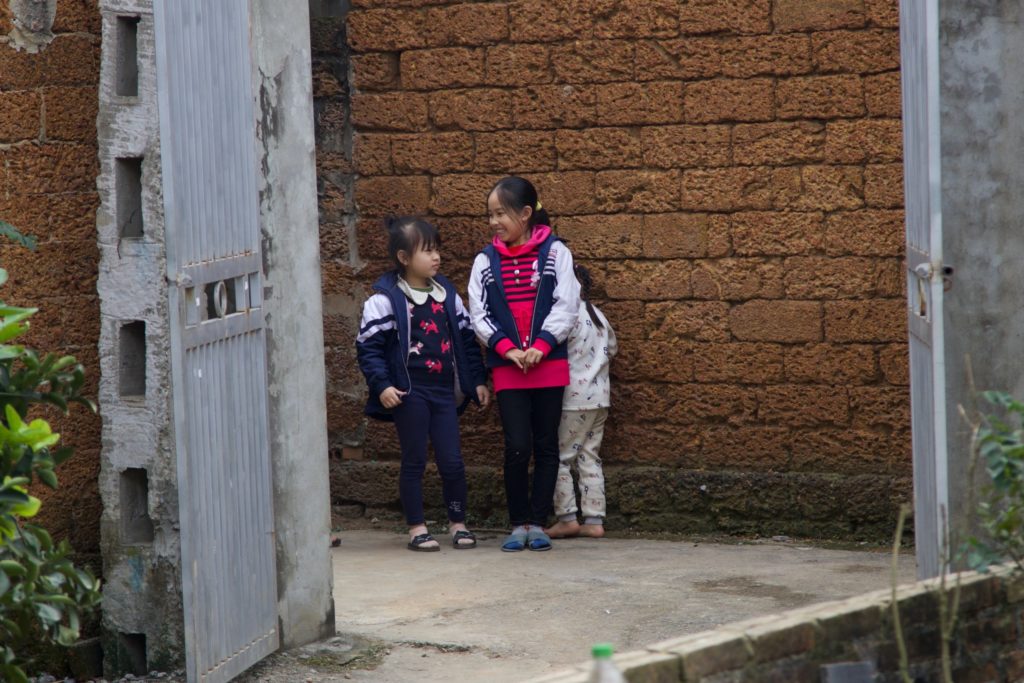
As Tieu shares, her three older daughters are getting ready for school. It’s a cool day, and they put on the puffy striped jackets of their uniforms over heavy sweaters and leggings. Three of Tieu’s daughters are in primary school, and her youngest just started kindergarten this year. For Tieu and her husband, the cost of sending their girls to school exceeds any of their other expenses — which is puzzling, considering that primary school is technically “free” in Vietnam.
“The law says it’s free, but the school will apply all kinds of charges at the beginning of the year that parents have to pay,” Thoa explains. “So uniforms and school supplies, parents have to buy books and then all kinds of fees charged by the school. They call it ‘maintenance fee’ or ‘teacher’s fee,’ and ‘buildings fee,’ ‘construction fees,’ academic achievement kind of fees. Each school has a long list of fees at the beginning of the year.” Although it varies from school to school and region to region, the total amount to send one child to school falls roughly between $75 to $200 — a huge sum of money for an already-struggling family with multiple school-age children.
“If parents cannot afford to pay,” Thoa says, “their children cannot go to school.”
Many families go into debt just to put their children through primary and secondary school.
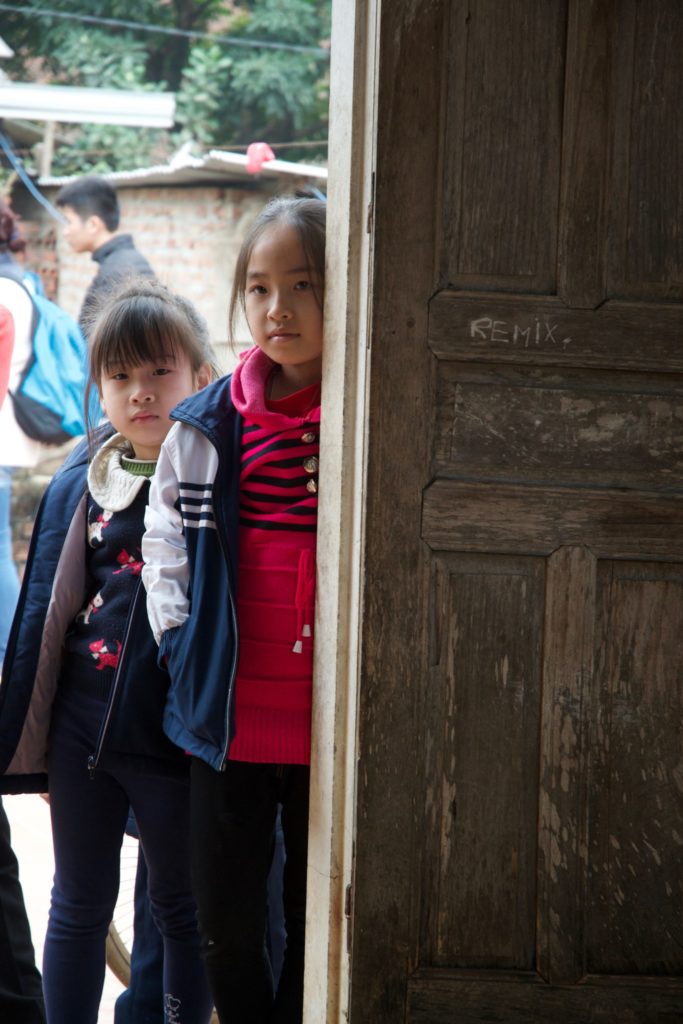
“Education is so highly valued in Vietnam — by the parents, by the society … and it’s very competitive too,” Thoa says. “I would say it’s a really difficult system to succeed. That’s why parents, that’s all they do. They can go hungry, but their children have to go to school.”
Thankfully, Tieu’s daughters have sponsors now, who stepped up to help support them after reading their family’s story. Every month, these sponsors help meet the children’s basic needs at home, as well as pay their school fees, buy their notebooks and pens and books, and provide new uniforms when they outgrow the ones they have.
Sponsors are helping Tieu’s daughters get through school, and she is so grateful for their support — support that now allows Tieu to focus her sights on an even loftier goal. She wants all of her daughters to go to a university in a big city, where they can study to become teachers or other professionals. Tieu has a high school diploma herself — enough education to get a job in a factory, but not to have the kind of life she dreams for her daughters.
“If they can go to school, they can have a career so they don’t have to work as hard as their parents,” Tieu says of her daughters who still live at home. Tieu’s oldest daughter has already graduated from high school. She got married earlier this year, and now works in a factory.
“That’s the dream,” Thoa says of Tieu’s determination to send her daughters to university. “Of course, if you ask any mother in Vietnam, that’s what they say, because the whole society is doing that for their children. Including if they have to sell the house, they do it.”
Although considerably less than in the U.S., at $500 to $1,000 per year, the price tag for a college education in Vietnam still exceeds what most rural families can afford. Admission is also fiercely competitive, with far more applicants than slots available — and a very limited number of scholarships awarded to only the most high-performing students.
“Whether she can do it or not with five kids,” Thoa says of Tieu’s goal, “it really depends on if the kids will be able to progress through 12th grade.”
But as long as her daughters continue to excel in school, their sponsors will continue supporting them, including little Nam. For the next 12 years — as long as her family needs help paying her fees — Nam will have a sponsor supporting and cheering her on.
And one day, if Nam, or any of her sisters, gain admission to university, Holt donors will help them get there.
“We tell overseas staff, if you have kids who are high-performing who can perform at university level, but who are struggling with finances, just discuss with us on a case-by-case basis,” Thoa says. “Don’t hold them back.”
Tieu hopes to one day regain full use of her hand so she doesn’t have to rely on her husband and her children, who help with heavy lifting and farm work that she can no longer do on her own. She looks at her daughters sitting with her — her serious daughter who wants to become a doctor, and her youngest, Nam, who snuggles into her mom’s arm as she talks, giggling and squirming, oblivious to the family hardships that her older siblings have grown increasingly aware of.
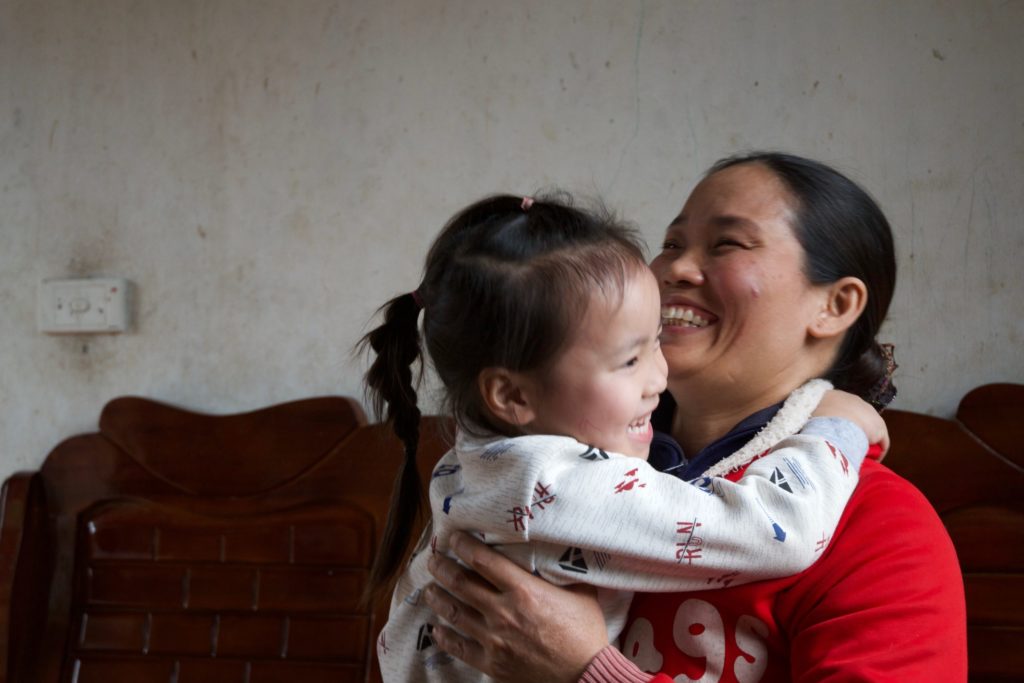
Tieu may never regain full mobility, but she has security now. With her cow, she has a reliable source of income, and will soon have profit to start saving for college. And she has sponsors, who have come alongside Tieu in her mission to educate her daughters — and give them the life she never had. With these gifts of hope, Tieu is now connected to a global community of people whose compassion stretches over continents and seas, from big cities and small towns in the U.S., to a rural commune in northern Vietnam.
“I’d like to thank all the people,” Tieu says, “who supported me and my family.”
Her face warm and relaxed, Tieu pulls her youngest daughter tight, and giggles with her. Thankfully, she can still do that.
Robin Munro | Managing Editor
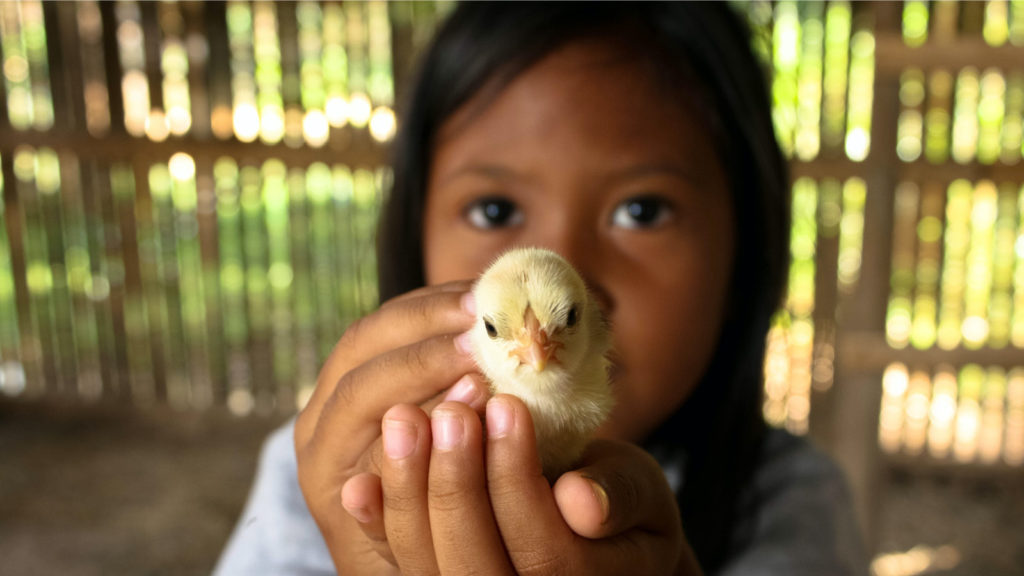
Give a Gift of Hope
Give a lifesaving or life-changing tangible gift to a child or family in need. And this holiday season, give in honor of a loved one and they’ll receive a free card!
